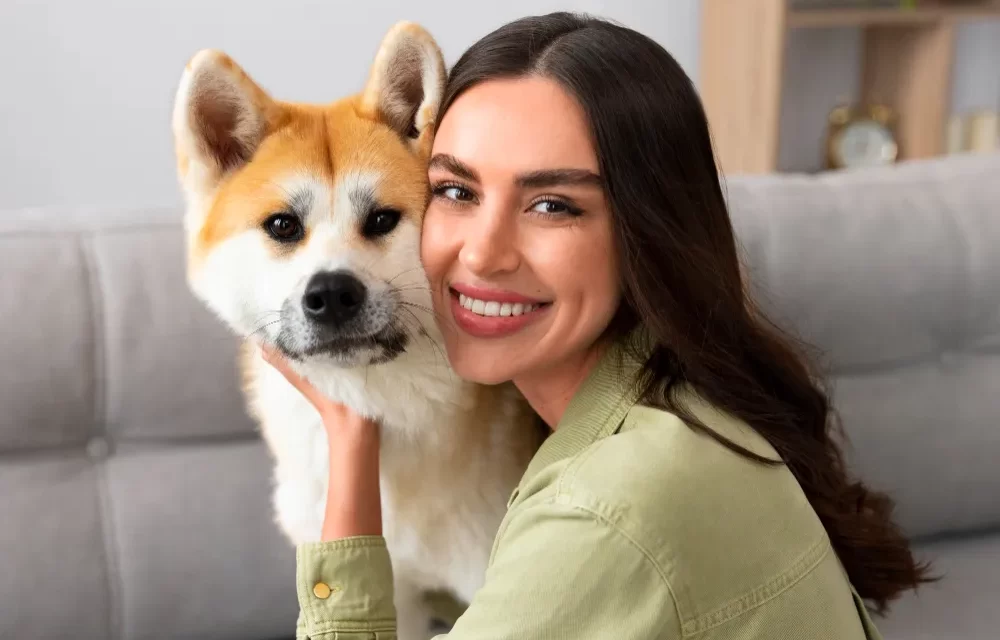When choosing a Shiba Inu, one of the most common questions future owners ask is: “Should I get a male or a female?” With their fox-like faces, confident strut, and independent attitude, Shibas are truly one-of-a-kind.
While both sexes share the same iconic Shiba charm, there are some noticeable differences in temperament, training, size, and even how they express affection. In this post, we’re diving into the key differences between male and female Shiba Inus, providing you complete breed information, so you can decide which pup might be the better fit for your lifestyle.
Quick Snapshot: Male vs Female Shiba Inu
| Trait | Male Shiba Inu | Female Shiba Inu |
|---|---|---|
| Size | Slightly larger and bulkier | Smaller and more compact |
| Temperament | Goofy, playful, affectionate | Independent, reserved, smart |
| Training tendency | Distracted easily | Learns quickly but stubborn |
| Social Behaviour | More outgoing, loves attention | Selective, prefers a small circle |
| Territorial Behaviour | Can be more dominant | Less marking if desexed |
| Affection | Cuddly and clingy | Affectionate on her own terms |
Overview of Shiba Inu Dog
The Shiba Inu is one of Japan’s oldest, most beloved, and popular dog breeds, known for its bold spirit, fox-like appearance, and strong independence. Shiba dogs are small, nimble, and extremely vigilant. They were first developed to hunt small wildlife in Japan’s untamed highlands. Today, they’ve found a special place as loyal companions around the world.
When exploring the history of Shiba Inu dog, it’s fascinating to see how these ancient dogs survived centuries of change. Despite near-extinction during World War II, dedicated breeding efforts helped preserve the Shiba Inu’s bloodline, allowing it to thrive both in Japan and internationally. Their past is one of tenacity, devotion, and flexibility.
What is the Key Differences Between a Male and Female Shiba Inu
Visual Difference
Male Shiba Inu Female Shiba Inu
Size & Physical Differences
Let’s begin with something you can easily notice at first glance: their size and build.
Male Shiba Inus typically grow a little larger than females. Adult males tends to be slightly larger and heavier than females around 10–12 kg (22–26 lbs), and they stand a bit taller with a noticeably stockier frame. Their body structure is slightly bulkier, with a broader chest and a more muscular build, giving them a powerful, athletic appearance.
Female Shiba Inus, on the other hand, are generally lighter, weighing between 8–10 kg (17–22 lbs). They have a more refined, dainty structure—leaner and more delicate-looking overall. Their faces might even seem a little narrower, adding to that elegant, slightly more “fox-like” charm.
While the difference in size might not be massive, it’s something worth considering—especially if you live in an apartment or a smaller space where every kilo matters!
Temperament and Personality
Now comes the truly fascinating part—what’s happening inside that clever Shiba mind.
When it comes to Shiba Inus male dog’s temperament often act like the class clowns. They’re playful, affectionate, and openly enthusiastic about life. They love interaction, crave attention, and will often stick close by your side, nudging you for belly rubs or throwing you their best “puppy dog eyes” to initiate playtime. They tend to be more extroverted, charming everyone they meet with their easygoing, cheerful vibe.
Unlike their male counterparts, female Shiba Inu embody a more independent, dignified spirit. They’re smart, observant, and sometimes a bit aloof—not because they don’t love you, but because they value their personal space. Affection from a female Shiba is a real honor—you’ll need to earn it, but once you do, it’s strong and unwavering. Think of her as the self-assured queen of the house who loves on her own terms.
In short:
-
Males are playful, goofy, and more dependent.
-
Females are confident, independent, and a bit more reserved.
Training & Intelligence
Make no mistake—both male and female Shibas are incredibly intelligent. But their smarts often come wrapped in a stubborn, mischievous little package.
Male Shibas are typically more food-motivated and driven by fun rewards. They may learn commands quickly if the treat is tempting enough, but they’re also more easily distracted—especially by interesting smells, squirrels, or other dogs nearby.
Female Shibas, however, tend to be more focused, independent, and occasionally stubborn during training. They catch on to commands fast and often outperform males in obedience—when they decide it’s worth their effort. If a female Shiba thinks a command is pointless or boring, she might give you a look that says, “Why should I?”
Are female dogs more aggressive than male dogs?
Male dogs are generally perceived as being more outwardly aggressive, especially if they are not neutered, though this varies by breed and individual dog. Though it’s typically more situational, such as defending their territory or offspring, female dogs can also be aggressive.
Social Behavior & Territorial Tendencies
Social behavior is another area where male and female Shibas can differ noticeably.
Male Shibas are usually more sociable and playful with both people and other animals. They can make great companions for multi-pet households—as long as they’re properly socialized from a young age. However, intact males (not neutered) may show signs of dominance or same-sex aggression.
Female Shibas are often more selective. They won’t go out of their way to be everyone’s best friend, but once they form bonds, they’re fiercely loyal. They’re cautious around new dogs and people but rarely aggressive unless provoked.
When it comes to territorial marking:
-
Males (especially intact males) are more prone to marking their territory both indoors and outdoors.
-
Females (especially spayed females) generally mark far less.
Do they mark their territories differently?
Male and female Shiba Inus do mark their territories differently. Male Shibas are more likely to mark, especially if they’re not neutered. They often lift their leg to pee on things like trees, poles, or even furniture during walks, not just to go to the bathroom, but to leave their scent and claim an area.
Female Shibas usually mark much less and are more subtle when they do. They typically squat to pee, and marking for females is often linked to hormonal changes, especially if they haven’t been spayed.
Affection Levels
If you’re after a snuggly companion who’s happy to curl up next to you every evening, a male Shiba might be your perfect match. They are usually more openly affectionate, more likely to seek cuddles, and thrive on human companionship.
Female Shibas love their families deeply too, but they show affection on their own terms. One moment she might grace you with snuggles; the next, she’ll retreat to her favorite quiet spot for some alone time. Don’t take it personally—it’s simply part of her strong, confident personality.
In short:
-
Males = Lapdogs in fox costumes.
-
Females = Independent queens who choose when to bestow their love.
Health & Care
When it comes to health, male and female Shiba Inus are generally very similar. However, there are a few subtle differences between the sexes worth noting.
-
Male Shiba Inus tend to have a slightly higher risk of developing orthopedic issues like hip dysplasia, especially if they grow too quickly as puppies. Intact (non-neutered) males are also more prone to prostate problems as they age.
-
Female Shiba Inus, particularly those that are spayed, may have a slightly lower risk of certain joint issues but can be prone to urinary tract infections (UTIs) after spaying. If not spayed at a young age, females are equally susceptible to breast cancers.
Common Health Issues in Shiba Inu Males and Females
| Health Issue | Male Shiba Inus | Female Shiba Inus |
|---|---|---|
| Hip Dysplasia | More common, especially in intact males | Can occur, but slightly less frequent |
| Patellar Luxation (Kneecap Dislocation) | Common | Common |
| Allergies (Food & Environmental) | Common | Common |
| Glaucoma | Risk present | Risk present |
| Progressive Retinal Atrophy (PRA) | Risk present | Risk present |
| Hypothyroidism | Risk present | Risk present |
| Prostate Problems | Higher risk if not neutered | Not applicable |
| Mammary Tumors | Not applicable | Higher risk if not spayed early |
| Urinary Tract Infections (UTIs) | Less common | More prone after spaying |
| Periodontal (Dental) Disease | Common | Common |
Which One Is Right for You? Male or Female Shiba Inu Dog
Choosing between Shiba Inu male or female dog isn’t just about size or looks—it’s about finding the right personality match for your lifestyle and expectations.
Choose a Male Shiba Inu if:
- You’re looking for a more openly affectionate companion.
- You want a dog that is playful, goofy, and always ready for attention.
- You’re okay with some territorial marking (especially if not neutered early).
- You enjoy an energetic dog who loves social interaction with people and sometimes with other pets (with proper socialization).
- You have patience for slightly more distractible behavior during training sessions.
Personality Snapshot:
Males are the life of the party—affectionate, fun-loving, but sometimes a bit mischievous.
Choose a Female Shiba Inu if:
- You prefer a dog who is independent, calm, and a little more reserved.
- You admire a strong, confident personality that still bonds deeply with their humans—but on their own terms.
- You want a focused learner—females can be more serious about training if you earn their respect.
- You’re okay with a dog that may be selective with new people and pets.
- You appreciate a more refined and low-drama presence around the house.
Personality Snapshot:
Females are like queens—graceful, intelligent, and loyal, but they don’t seek constant attention.
Final Thoughts
At the end of the day, both male and female Shiba Inus are amazing, spirited, and full of personality. While gender differences do exist, remember that individual temperament and early training matter more than anything. Socialisation, consistency, and love go a long way in raising a happy Shiba, no matter the sex.
So, whether you bring home a charming male or a graceful female, you’re in for a unique and rewarding journey with one of the most fascinating dog breeds out there.




